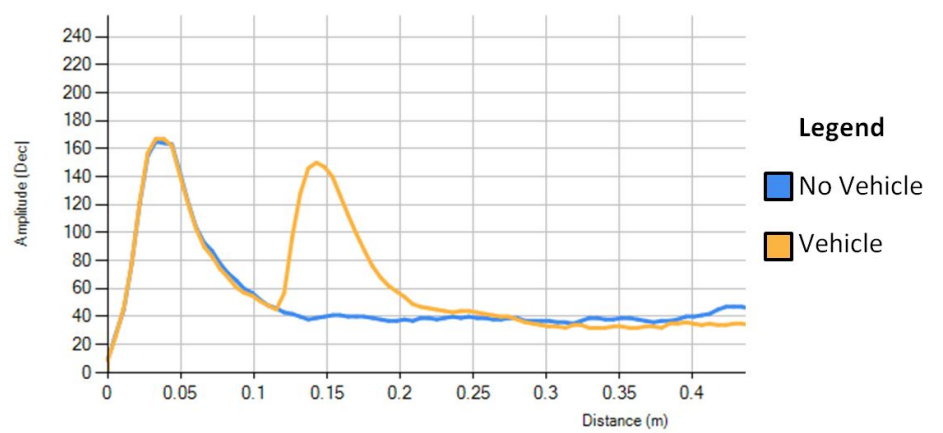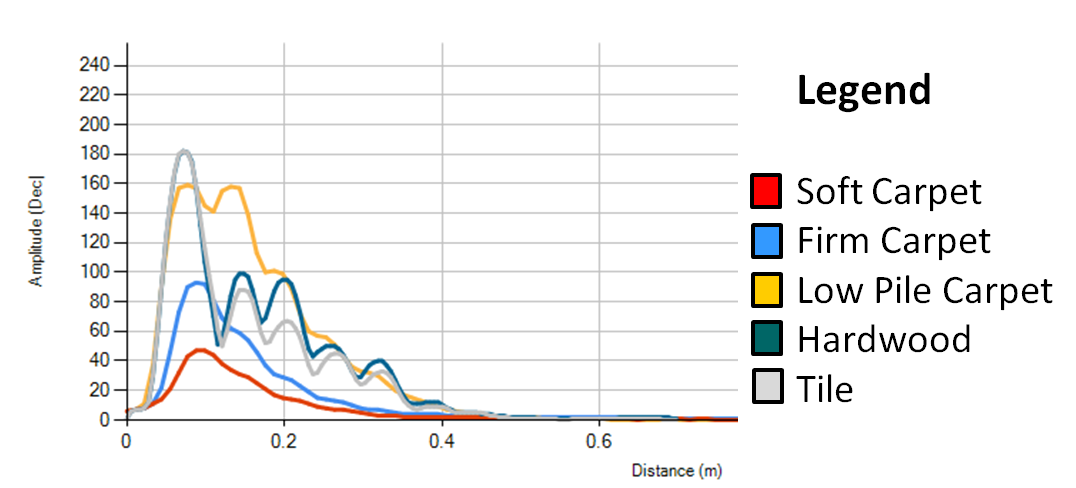SLAA907D September 2019 – December 2021 PGA450-Q1 , PGA460 , PGA460-Q1 , TDC1000 , TDC1000-Q1 , TDC1011 , TDC1011-Q1 , TUSS4440 , TUSS4470
1.4 Typical Ultrasonic-Sensing Applications
There are three types of ultrasonic-sensing applications:
- Ranging Measurement: Periodically records the distance of one or more objects moving to or from the sensor within each time-of-flight transaction. The rate at which the distance updates is dependent on how long the sensor waits in the echo-listen mode. The longer the sensor waits for the echo, the further the detectable range.
Examples: Ultrasonic park assist sensors, obstacle avoidance sensors in robotics, level transmitters
Further reading: Ultrasonic Terrain-Type and Obstacle Detection for Robotic Lawn Mowers tech note (SLAA910).
- Proximity Detection: A significant change to the ultrasonic echo signature corresponds to a physical change to the sensing environment. This binary approach of ultrasonic sensing is less dependent on range, and more dependent on echo signature stability.
Examples: Cliff and edge detection in robots, object detection, vehicle detection in parking space, security, and surveillance systems
Further reading: Using Ultrasonic Technology for Smart Parking and Garage Gate Systems tech note (SLAA911).
 Figure 1-2 Echo Response for Vehicle Presence
Figure 1-2 Echo Response for Vehicle Presence - Surface Type Detection: Using raw ultrasonic echo data, and not the time-of-flight measurement, material softness and hardness can be indirectly measured with ultrasonic measurements. Ultrasonic sound waves bounce off harder surfaces towards the transducer with fewer losses, which provides a stronger echo response in return. Softer objects, like foam and carpet, absorb many of the sound waves and provide a weaker echo response.
Examples: Floor type detection in vacuum robots, terrain type detection in robotic lawn mowers
Further reading: Ultrasonic Floor-Type and Cliff Detection on Automated Vacuum Robots tech note (SLAA909).
 Figure 1-3 Ultrasonic Surface Type Detection
Figure 1-3 Ultrasonic Surface Type Detection